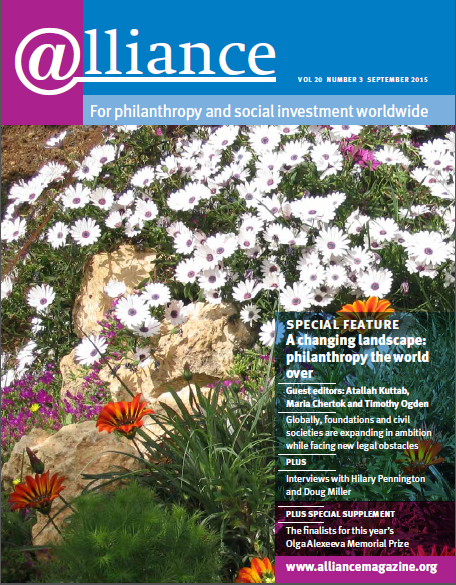I have spent the last two years trying to define Arab philanthropy. Though it was relatively easy to look at the history and the tradition of giving and the reasons for its decline, it was not easy to describe its development since the 1990s. The main trend has been to copy the Anglo-American discourse. This imposes limits, as local traditions were not taken into consideration in the new forms of philanthropy organization that were developing.
I was lucky to be awarded a Richard von Weizsaecker fellowship by the Robert Bosch Foundation, which provided me with the resources to interact with colleagues. Over the last year, I have had the chance to visit philanthropy organizations in China, Brazil, Colombia and South Africa, as well as in Germany, Spain, France, Italy and the UK. This has allowed me to define Arab philanthropy both within its own context and elsewhere in the world.
In almost all the countries I visited, the strong tradition of giving spans several hundreds, if not thousands of years. Governments, considering the welfare of their citizens as their sole responsibility, often disrupted this, by taking control of the philanthropic resources that existed, including endowments, lands and property. The last 25 years has witnessed a renewal and surge in philanthropic organizations. While this renewal shows many similarities in countries, there are also many specific differences, and it is this diversity that makes philanthropy rich.
To capture similarities and diversity, I propose a common framework for the global philanthropy ecosystem, shown below. It comprises three key components, though the description of each may vary.
- Sources of funds When considering the potential funds for giving, 2 per cent of country GDP seems to be plausible. This is where it stands in Saudi Arabia, UAE and US. In Muslim countries, the guideline for zakat is 2 per cent of one’s income. India is mandating 2 per cent of company profits to fund social projects.
- Intermediaries Not always used because of issues of trust. In many cases, funds go from sources to end users without passing through an intermediary.
- End users of funds NGOs/NPOs, community organizations, social businesses, and needy individuals/families.
Evolving areas of philanthropy globally that will help develop the proposed framework include: individual, family and corporate philanthropy, including family businesses; community foundations and impact investing. See p00 for an example of how the completed framework provides a national or regional snapshot.
Several key players in global philanthropy met in Berlin on 3 and 4 June to discuss global philanthropy. The object of the meeting was to highlight the changing landscape of philanthropy around the world, with local discourses building on global best practice and evolving patterns. Both this meeting and deliberations over the past year inspired the framework presented here, allowing comparative regional analysis and highlighting rich diversity.
The articles in this section of the special feature aim to take Berlin discussions one step further. I hope you enjoy them.
For more information
To read the full report of the Berlin meeting, visit the SAANED website, http://tinyurl.com/ArabGlobPhil
Main image: The Fikra project in Fernana, Jendouba district, north‑west of Tunis, helps rural women increase their incomes.





Comments (0)